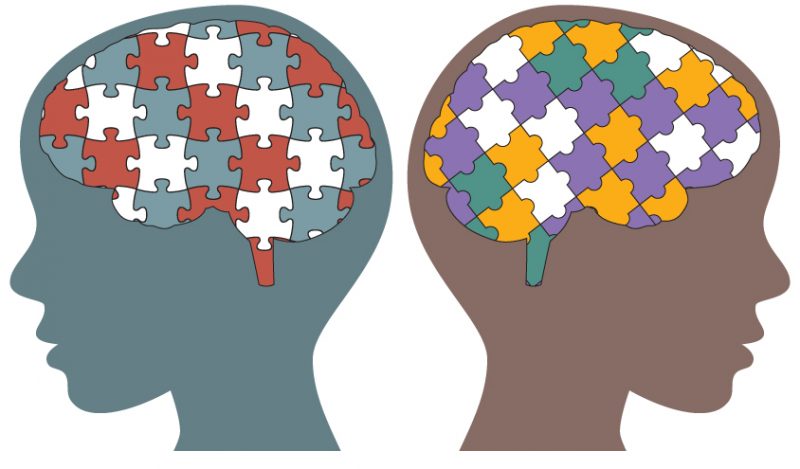Autism is difficult to define, because it is such a spectrum. From mild to severe cases, every individual may experience different symptoms of the disease. However, the generic idea is that in people with autism experience a decrease in amount of neural communication. The communication error may be the result of three different issues that neuroscientists have looked at.
- Neural Connectivity
- In autism, the normal process of pruning the unnecessary neurons to promote stronger connections is vital in neural signaling. If there are too many neurons, the amount of low-level signaling is too high, causing “noise” in connectivity which then disables efficient processing of information.

- E/I Imbalances
- In the brain, GABA is the substrate that inhibits activity, while glutamate is the molecule that excites the brain. The two work together to balance each other out to do the basic functions of the brain. This is all good and dandy until the balance gets out of whack. When the brain uses its spidey senses and detects something is wrong, it tries to fix it. The immune cells in the brain stimulate inflammation, which is great when there is actually something wrong in order to get rid of the “bad guys”. But in this case, there are no “bad guys” and the inflammation only contributes to the difficulty of neural connectivity.
- Dendrite Morphogenesis
- Remember about that inflammation causing trouble with signaling? That’s probably because the inflammation, during the developmental years (2-4 yrs old), creates little room for the neurons to expand and grow into the correct size and shape. With odd-looking neurons, signaling cannot go as planned.
- Remember about that inflammation causing trouble with signaling? That’s probably because the inflammation, during the developmental years (2-4 yrs old), creates little room for the neurons to expand and grow into the correct size and shape. With odd-looking neurons, signaling cannot go as planned.
So how do we fix it?
Unfortunately, there is no cure to autism, yet. Several labs are currently studying the ways that autism can be treated. However, with such a large spectrum, it is hard to find a cure for everyone. Right now, all we can do is treat the symptoms of autism. We can do this using treatments, medicine, or a combination of the two.
Treatments:
A commonly used treatment for autism is Applied Behavior Analysis (ABA). It is based on the idea of positive reinforcement in order to communicate goal behaviors. The person receives a reward when the goal behavior or skill is performed. It teaches the person that good things happen when that behavior is displayed.
Speech therapy is also very common with people with autism. For non-verbal, low-functioning autistic people, speech therapy can help with basic words and can even spend time working on the teaching of non-verbal communication. For high-functioning autistic people, speech therapy might just be a place where they learn about social and non-verbal cues that happen during conversations.
Both are good to help with interactions and communication.
Medicine:
It is necessary for medication to treat the three main symptoms of autism: communication difficulties, social interaction challenges, and repetitive behavior. Unfortunately, there isn’t a medication on the market that treat any of those things.
There are two main drugs commonly used by those who have autism: risperidone and aripiprazole. They both function by blocking dopamine and serotonin receptors in order to cut back on the “noise” that is being produced by the overactive neuron signaling.
Although not common, autism may be treated with naltrexone, which is an approved treatment for alcohol and opioid addictions. In the same way that it alleviates the addiction, naltrexone helps to disable repetitive and, sometimes, destructive behaviors that may occur with autism.
While not proven, many people with autism elect to take an SSRI, selective serotonin reuptake inhibitor. Some of which include: fluoxetine, escitalopram, and sertraline. It is said that these medications help with social interactions by alleviating anxiety and depression that may develop in autistic people.
That being said, it should be emphasized that AUTISM IS A SPECTRUM! Every person and their situation is unique. What may have worked for one person, may be harmful for another person. Talk to your doctor and see what option is best for you!
https://www.autismspeaks.org/medicines-treating-autisms-core-symptoms
https://moodle.cord.edu/pluginfile.php/723245/mod_resource/content/0/pathophys%20of%20ASD%202017.pdf
